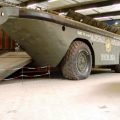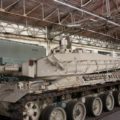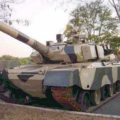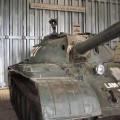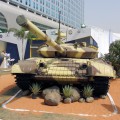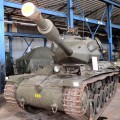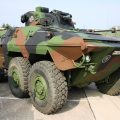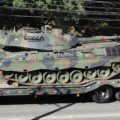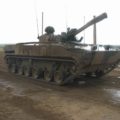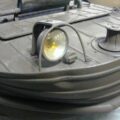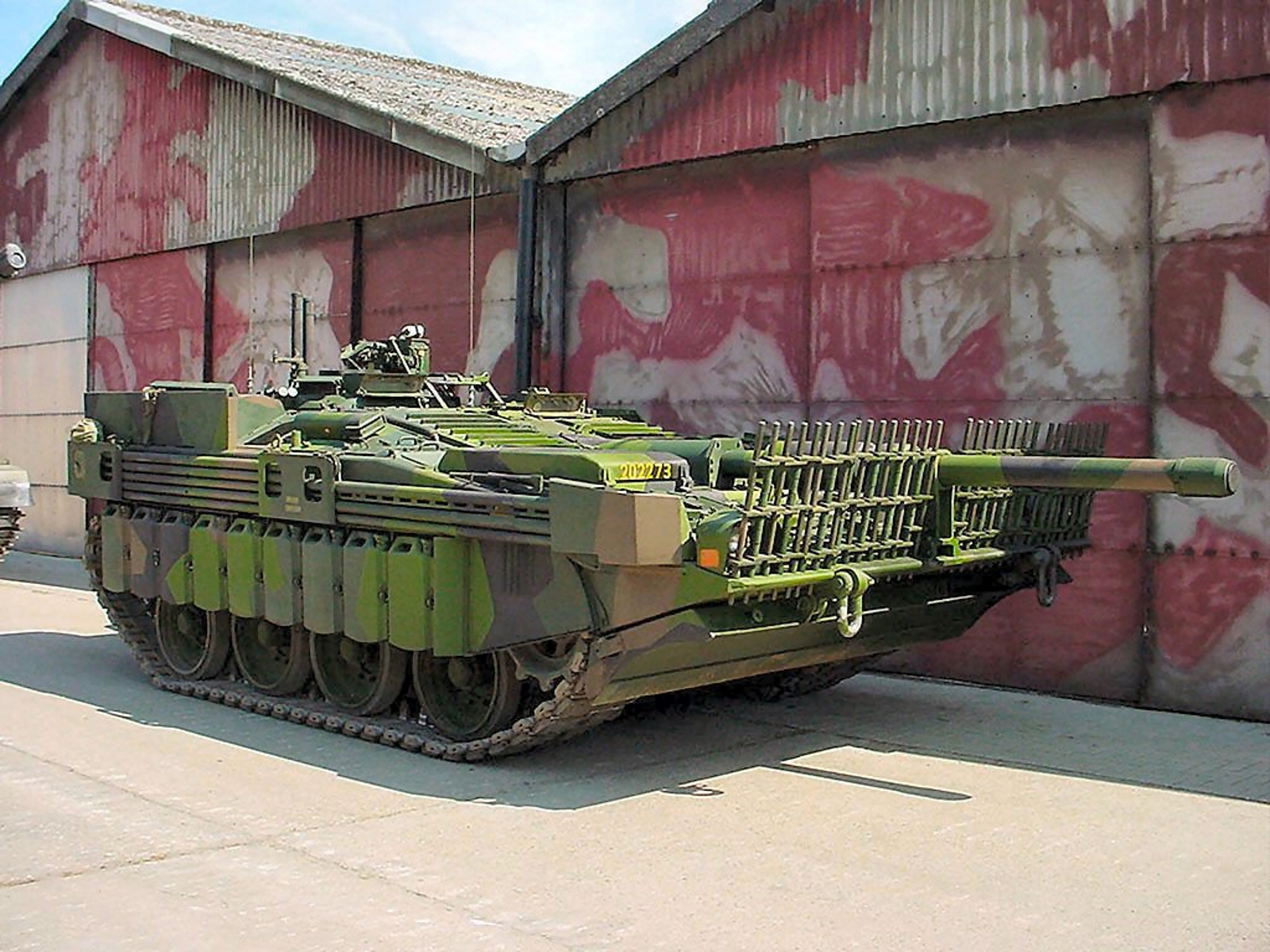
Stridsvagn 103 | ||
| Zemlja | Švedska | |
| Tip | Amfibijski glavni borbeni tenk | |
| U službi | 1960s–1997 | |
| Izgradio | 290 | |
Čaj Stridsvagn 103 (Strv 103), also known as the S-Tank, was a Swedish post-war main battle tank. It was known for its unconventional design: it was turretless with a fixed gun traversed by engaging the tracks and elevated by adjusting the hull suspension. While turretless armoured fighting vehicles are usually classified as assault guns or tank destroyers, despite its unique gun laying process the Strv 103 is considered a tank because its designated combat role matched those of other tanks within contemporary Swedish doctrine. It is the only main battle tank and the only tank of any kind since the World War II era to dispense with a turret. The Strv 103 was designed and manufactured in Sweden. It was developed in the 1950s and was the first main battle tank to use a turbine engine. The result was a very low-profile design with an emphasis on defence and heightened crew protection level. Strv 103s formed a major portion of the Swedish armoured forces from the 1960s to part of the 1990s, but have since been removed from service in favour of the Stridsvagn 122.
Izvor: Stridsvagn 74 on Wikipedia
| Stridsvagn 103 | |
|---|---|
| Fotograf | Nepoznato |
| Lokalizacija | Nepoznato |
| Fotografije | 45 |
| Stridsvagn 103 S-Tank Walk Around | |
|---|---|
| Fotograf | Vladimir Jakubov |
| Lokalizacija | Musee des blindes, Saumur |
| Fotografije | 113 |
Srodni kompleti:
Pronađi komplete na eBay-u:
| Char S tip B Stridsvagn 103B Walk Around | |
|---|---|
| Fotograf | Nepoznato |
| Lokalizacija | Nepoznato |
| Fotografije | 42 |
The Stridsvagn 103 (Strv 103), also known as the S-Tank, was a Swedish post-war main battle tank, designed and manufactured in Sweden. It was the first main battle tank to use a gas turbine engine and the only mass-produced tank since World War II to dispense with a turret. It had an unconventional design with a fixed gun that was aimed by adjusting the tracks and the suspension. The result was a very low-profile tank with a high level of survivability and crew protection. The Strv 103 formed a major part of the Swedish armoured forces from the 1960s to the 1990s, when it was replaced by the Leopard 2 variants Stridsvagn 121 and Stridsvagn 122.
In English, Stridsvagn means combat wagon or tank, and 103 comes from being the third tank in Swedish service to be equipped with a 10 cm gun. The Strv 103 was developed in the 1950s as an alternative to the expensive and heavy KRV project, which proposed a 155 mm smoothbore gun in an oscillating turret. The Strv 103 was designed by Sven Berge, who based his concept on the idea that the risk of being hit in combat is closely related to the height of the tank. He proposed that the new tank should be as low as possible, which could only be achieved by eliminating the turret. This also reduced the weight and complexity of the tank, and allowed for a unique gun laying process that used the tracks and the suspension to aim the gun. The Strv 103 had a three-man crew: a commander, a gunner/driver, and a rear driver. The rear driver could drive the tank backwards at full speed, which increased its mobility and flexibility.
The Strv 103 was armed with a Bofors L74 10.5 cm L/62 rifled gun with an autoloader and 50 rounds of ammunition. The gun had a high muzzle velocity and accuracy, and could fire both conventional and fin-stabilized projectiles. The Strv 103 also had three 7.62 mm machine guns: two fixed ones in the front hull and one anti-aircraft one on top of the tank. Additionally, it had two 71 mm Lyran mortars for illumination and smoke purposes. The Strv 103 had a composite armour that consisted of steel plates with plastic filler between them. The armour thickness varied from 15 to 40 mm, but due to its high slope angle, it provided an effective protection of up to 337 mm against kinetic energy projectiles and up to 600 mm against shaped charge warheads.
The Strv 103 had two engines: a diesel engine and a gas turbine engine. The diesel engine was used for cruising and low-speed manoeuvring, while the gas turbine engine was used for boosting the power and speed of the tank. The Strv 103 had a hydrostatic transmission with two forward and two reverse speeds, and a gas-hydraulic suspension that could adjust the height and tilt of the hull. The Strv 103 had a maximum road speed of 60 km/h forwards or backwards, and an operational range of 390 km. The Strv 103 could also swim across water obstacles using its tracks as propellers and its snorkel system.
The Strv 103 was produced in four variants: A, B, C, and D. The A variant was the first production model, with a Rolls-Royce K-60 diesel engine and a Boeing GT502-10MA gas turbine engine. It entered service in 1967 and was upgraded to B standard in 1970-1971. The B variant had improved fire control systems, radios, night vision devices, ventilation systems, and ammunition storage. It also had a more powerful Boeing 553 gas turbine engine. The C variant was introduced in 1978-1984, with further improvements in fire control systems, armour protection, NBC protection systems, electrical systems, and engine cooling systems. It also had a new Detroit Diesel 6V-53T diesel engine that replaced the Rolls-Royce K-60 engine. The D variant was a proposed upgrade that never materialized, which would have included a new smoothbore gun, an improved autoloader, new sights, and new tracks.
The Strv 103 was considered a successful tank design that met its requirements of being low-cost, low-profile, survivable, mobile, and flexible. It performed well in trials and exercises against other NATO tanks such as the Leopard 1

Views : 6067
